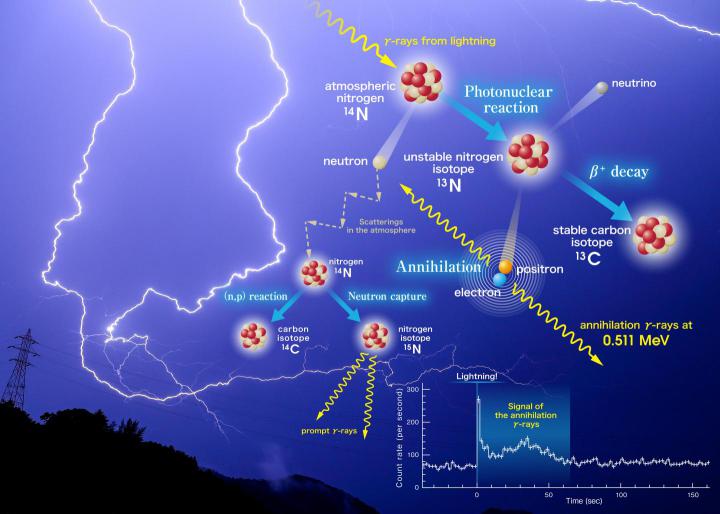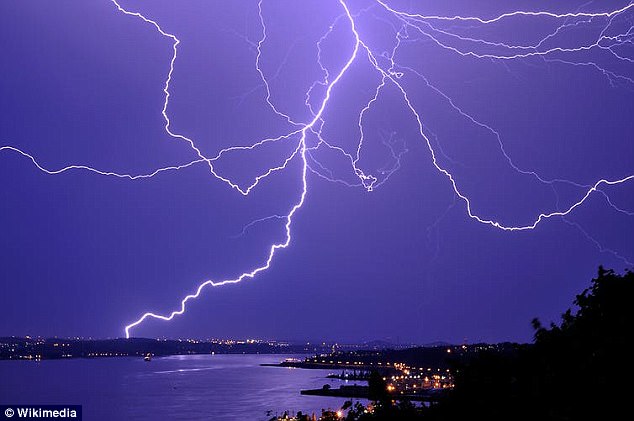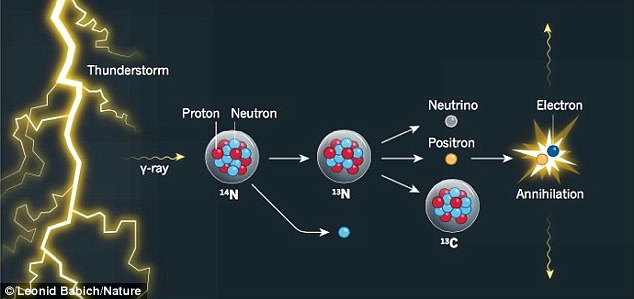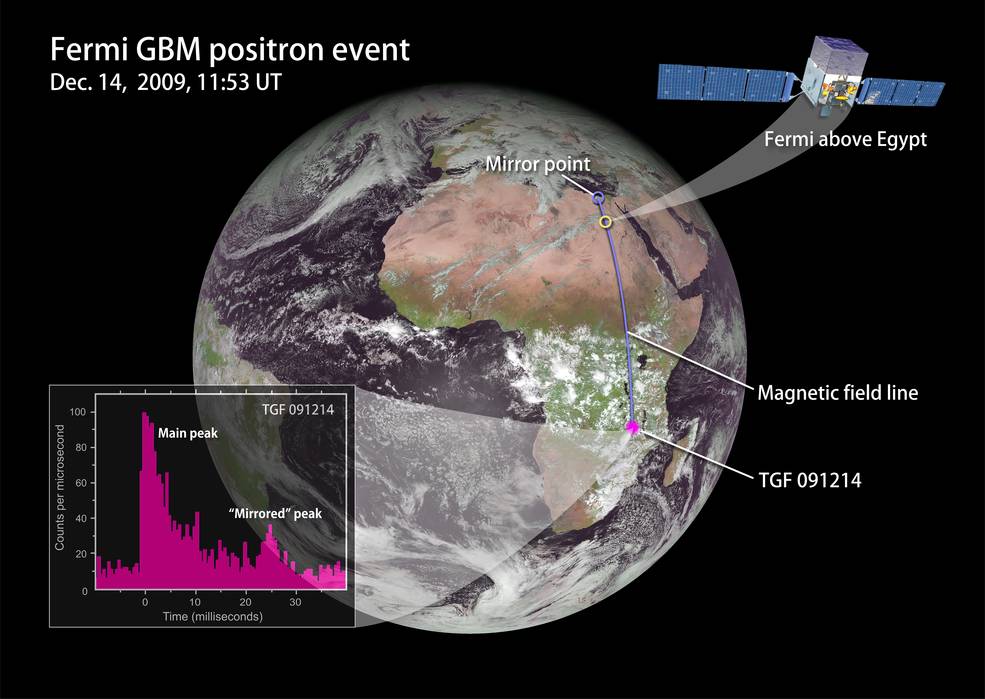This is an interesting story and can be found at various places on the Internet – for example, at https://wattsupwiththat.com/2017/11/22/discovery-lightning-creates-anti-… .. lightning creates anti matter in our atmosphere. Back in 2009 Anthony Watts suggested a huge electric charge differential in Earth's atmosphere acted like a particle accelerator and now it seems scientists have verified the idea (or at least, a team from Kyoto University in Japan).
A storm approaches – the sky darkens and there is the low rumble of thunder. Then, without warning a flash. Lightning has struck. This scene is repeated constantly across the planet – all the time …
 …. in a Nature study researchers from Japan describe how gamma rays from lightning react with the air to produce radio-isotopes and positrons (the anti matter equivalent of electrons). We already know thunder clouds and lightning emit gamma rays as the Japanese began by installing a series of small gamma ray detectors placed along the coast. They used crowd funding as they could not get adequate funding by conventional means – using the Internet to advertise their experimnet. They were able to build more and bigger detectors, and crowd funding paid off. Anti-matter, it seems, is not science fiction – anymore. See also https://www.nature.com/articles/nature24630 (where we have photnuclear reactions).
…. in a Nature study researchers from Japan describe how gamma rays from lightning react with the air to produce radio-isotopes and positrons (the anti matter equivalent of electrons). We already know thunder clouds and lightning emit gamma rays as the Japanese began by installing a series of small gamma ray detectors placed along the coast. They used crowd funding as they could not get adequate funding by conventional means – using the Internet to advertise their experimnet. They were able to build more and bigger detectors, and crowd funding paid off. Anti-matter, it seems, is not science fiction – anymore. See also https://www.nature.com/articles/nature24630 (where we have photnuclear reactions).
The same story is at https://tallbloke.wordpress.com/2017/11/23/thunderstorms-create-radioact… … and here we have the story presented in a completely different way – thunderstorms create radioactivity which in turn creates isotopes of carbon 13, carbon 14, and nitrogen 15. The findings also have implications for astronomers and planetary scientists. The author, OldBrew, goes on to describe ionisation processes and describes an experiment made a century ago by Victor Hess that showed the ionisation rates increased rapidly with height (he used a hot air balloon). He concluded there must be a source of radiation very high in the atmosphere – and his findings were later called cosmic rays. These are made up of charged particles and when they hit the atmosphere they interact with atoms and molecules to produce a shower of subatomic particles – amongst which are neutrons (which have no electric charge). It is these neutrons that make radio carbon dating possible as most carbon atoms have 6 protons and 6 to 7 neutrons (isoptopes 12C and 13C). However, neutrons produced by cosmic rays react with nitrogen in the atmosphere to create 14C (a heavy and unstable isotope of carbon that will, over time, radioactively decay back into a form of nitrogen). 14C oxidises to form carbon dioxide and via this enters the food chain of plants and animals which absorb radioactive co2. Organic samples can be dated by measuring the rates of 12C to 14C (using the known radioactive half life of 14C, 5730 years). In this way cosmic rays are responsible for nuclear reactions in the Earth's atmosphere (see also https://phys.org/news/2017-11-thunderstorms-radioactivity-scientists.html ).
See also www.dailymail.co.uk/sciencetech/article-5110887/Thunderstorms-create-rad… … lightning creates nuclear reactions in the sky. Scientists prove storms can trigger fission and anti-matter …
 … Teruaki Enoto of Kyoto University showed radioactive gamma rays produced by lightning react with the air in the atmosphere. The fallout is not dangerous as it is similar to Earth's background radiation. Excellent description of the science and the experiments …
… Teruaki Enoto of Kyoto University showed radioactive gamma rays produced by lightning react with the air in the atmosphere. The fallout is not dangerous as it is similar to Earth's background radiation. Excellent description of the science and the experiments …
 …Meanwhile, back in 2011 NASAs Fermi gamma ray space telescope detected beams of anti matter produced above thunderstorms (upward shooting lightning, or sprites). Scientists think the anti-matter particles were formed in a terrestrial gamma ray flash within a thunderstorm (lightning). See www.nasa.gov/mission_pages/GLAST/news/fermi-thunderstorms.html
…Meanwhile, back in 2011 NASAs Fermi gamma ray space telescope detected beams of anti matter produced above thunderstorms (upward shooting lightning, or sprites). Scientists think the anti-matter particles were formed in a terrestrial gamma ray flash within a thunderstorm (lightning). See www.nasa.gov/mission_pages/GLAST/news/fermi-thunderstorms.html

